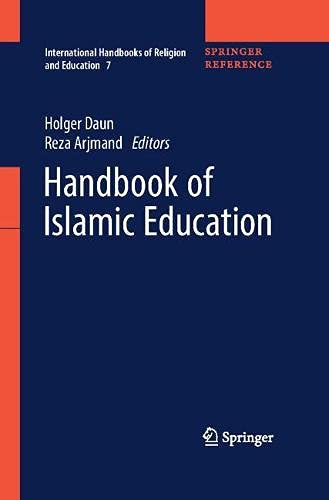آموزش اسلام در آمریکای لاتین
Islamic Education in Latin America
- نیکولای دوبرونراوین
- Nikolay Dobronravin
- چکیده
The development of Islamic education in Latin America and the Caribbean started as early as the sixteenth century, when Muslim religious practices were brought there by African slaves. Although all of them then were nominally converted to Christianity, a number of Muslim communities managed to survive in a new environment, and Islamic education played an important role in Muslim survival strategies. At this early stage, Islamic education in the New World was basically West African and Mālikīte, keeping to the same curriculum and teaching material. Almost all traces of African Islam in Latin America and the Caribbean had vanished by the early twentieth century. The legacy of West African Mālikīte education is mostly known to us from the outsiders’ records published since the eighteenth century as well as a small number of written texts produced locally by Muslims (copies of the Qur’ān, Arabic poetry), amulets and very few original texts, e.g., on tawḥīd. The “African stage” in Latin American Islam is reconstructed in this chapter Since the nineteenth century, postcolonial Latin America and the Caribbean have experienced a steady flow of Muslim immigrants, mostly from the Middle East and South Asia. The former group of immigrants, most of them Lebanese, but known as “Turks” in Latin America, brought with them Islam and Islamic educational practices of the Ottoman Empire and its heir states. The latter, coming from British India and today’s Indonesia, were much more heterogeneous and have settled mainly in the Caribbean Islands such as Trinidad, Guyana, and Surinam. In the twentieth century, the modern picture of Latin American Islam and Islamic education was shaped by both immigrants, mostly from the Arab world as well as Iran and some other Islamic countries, and local converts, some of them heavily influenced by North American Black Islam. Others have been attracted by the activities of one or another ṣūfī “ṭarīqah” and more recently by the anti-ṣūfī and anti-Western Salafīyyah. In Latin American Muslim communities, as elsewhere, conflicting ideologies and religious practices within Islam have greatly influenced educational practices, often borrowed from the Middle East. Nowadays not only various Sunnī but also Shī’ah communities exist in Latin America, with their respective educational institutions and well-established links with Islamic “motherland(s).” These institutions, usually affiliated with Islamic cultural centers and mosques, are examined in this chapter. Special attention is paid to Islamic education in Brazil, Argentina, and Venezuela.
- مشخصات منبعشناختی
.Dobronravin, Nikolay. “Islamic Education in Latin America.” Handbooks of Islamic Education, Edited by Holger Daun and Arjmand Reza. Heidelberg, Springer (2018): 929-940
- ملاحظات
مولف در این مقاله که در «دستنامه آموزش اسلامی» منتشر شده، ابتدائاً ر مسلمانان آفریقایی و سابقاً مهاجرت آنها به آمریکای لاتین اشاره میکند. او با استفاده از تعبیر «اسلام آفریقایی»، حضور این افراد و آموزشهای دینی اسلامی در برزیل را شرح می دهد. وی در ادامه به معرفی برخی از نهادهای آموزش اسلام مالکیمذهب در این آمریکای جنوبی میپردازد و فعالیتهای آنها را شرح و توصیف میکند.
این مقاله یک پژوهش عمومی درباره آموزش اسلام در آمریکای جنوبی است و در صورتی که مقاله دیگری بهتر و دقیقتر و صاحب نظریهتر از آن به دست نیاید، برای ترجمه و استفاده به عنوان معرفیگر آموزش اسلام در آن منطقه میتواند مورد استفاده قرار بگیرد.
- درباره نگارنده
نیکولای دوبرونراوین: پژوهشگر در دانشکده روابط بینالملل، دانشگاه دولتی سن پترزبورگ، سن پتربورگ، روسیه
- کشور مورد بحث در مقاله
- مورد تایید جهت ترجمه و انتشار
- اطلس جامع شیعی /
- کتابخانه /
- مقاله /
- آموزش اسلام در آمریکای لاتین
